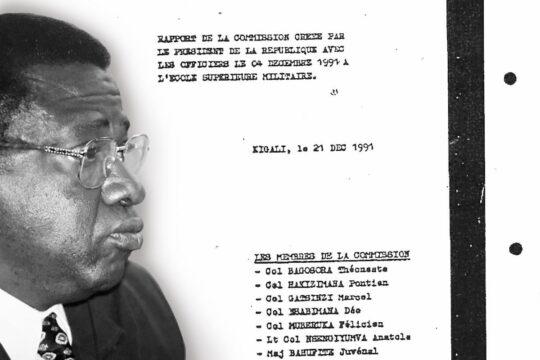As the International Criminal Tribunal for Rwanda (ICTR) closes its doors this December, eight of the 93 people it indicted are still on the run, including rich businessman Félicien Kabuga, whom the Prosecutor presents as the financier of the 1994 genocide.
The Office of the ICTR Prosecutor has often said Kabuga was hiding in Kenya, just six hours by road from the seat of the Tribunal in Arusha, northern Tanzania.
Other sources believe, however, that this man born in 1935 in the mountains of Byumba, northern Rwanda, is dead.
Kabuga is accused, among other things, of importing the machetes used to kill Tutsis in Rwanda in 1994. Starting as a small trader, he grew from nothing to become the richest man in his country at the time.
His success was such that in the villages of rural Rwanda, a peasant who was more successful than the others was nicknamed Kabuga.
To explain the extraordinary success of this uneducated man, a legend in Rwanda has it that he owes it to the spirits of his ancestors, to whom as an avowed animist he offered regular tributes. And still according to this tale from the “land of the 1,000 hills”, even when he owned the best modern furniture in the world, he still slept on the ground in a thatched hut, according to the orders of his ancestors.
Whereas other uneducated businessmen of the time shunned the university elite, Kabuga chose to frequent intellectual circles, surrounding himself with high-qualified people and forging solid friendships with senior people in the administration.
His entry into the highest circles was sealed in 1993 when one of his daughters married the oldest son of the president at the time, Juvénal Habyarimana.
Kabuga was a member of the presidential party, the MRND, and also on the executive committee of the notorious RTLM radio which broadcast incitement to ethnic hatred.
During the genocide, he was appointed president of the Fund for National Defence (FDN).
In June 1994, after the regular army was routed by rebels of the Rwandan Patriotic Front (RPF), the billionaire fled to Switzerland. After being ordered to leave the country, he went to Kinshasa, in the Democratic Republic of Congo, and then to Kenya.
“Big fish”
The list of ICTR fugitives also includes former Defence Minister Augustin Bizimana, also a member of the MRND party of former Hutu president Juvénal Habyarimana, who died when his plane was shot down over Kigali on April 6, 1994, sparking the genocide.
Bizimana, trained as an agricultural engineer, is accused of participating at the highest level in planning the genocide. Sources close to the ICTR say he is hiding in the eastern Democratic Republic of Congo (DRC). However, sources close to the former regime say he has died in Congo-Brazzaville.
The third person still sought by the ICTR is Major Protais Mpiranya, commander of Habyarimana’s presidential guard. This elite military unit was the most active in the massacres. Mpiranya, who was for a long time a commander of the FDLR rebel movement in the DRC, is being protected, according to the ICTR, by senior Zimbabwean officials. Other sources say he is dead.
Kabuga, Bizimana and Mpiranya are “big fish”, according to ICTR Prosecutor Hassan Bubacar Jallow, and should be tried by the Mechanism for International Criminal Tribunals (MICT), which handles ICTR residual functions. Special hearings were held in 2011 and 2012, at Jallow’s request, to preserve evidence against them in case they are arrested one day.
The case files of the other ICTR fugitives have been transferred to Rwanda. They concern Lieutenant-Colonel Phénéas Munyarugarama; former mayors Charles Sikubwabo, and Aloys Ndimbati ; former judicial police inspector Fulgence Kayishema; and former restaurant owner Charles Ryandikayo. Former mayor Ladislas Ntaganzwa, who had also been on the run, was arrested in the Democratic Republic of Congo on December 9 and was expected to be transferred to Rwanda for trial. The other five are also said to be hiding in the DRC. It is now up to Rwanda, with the help of the MICT, to track them down, have them arrested and tried.






